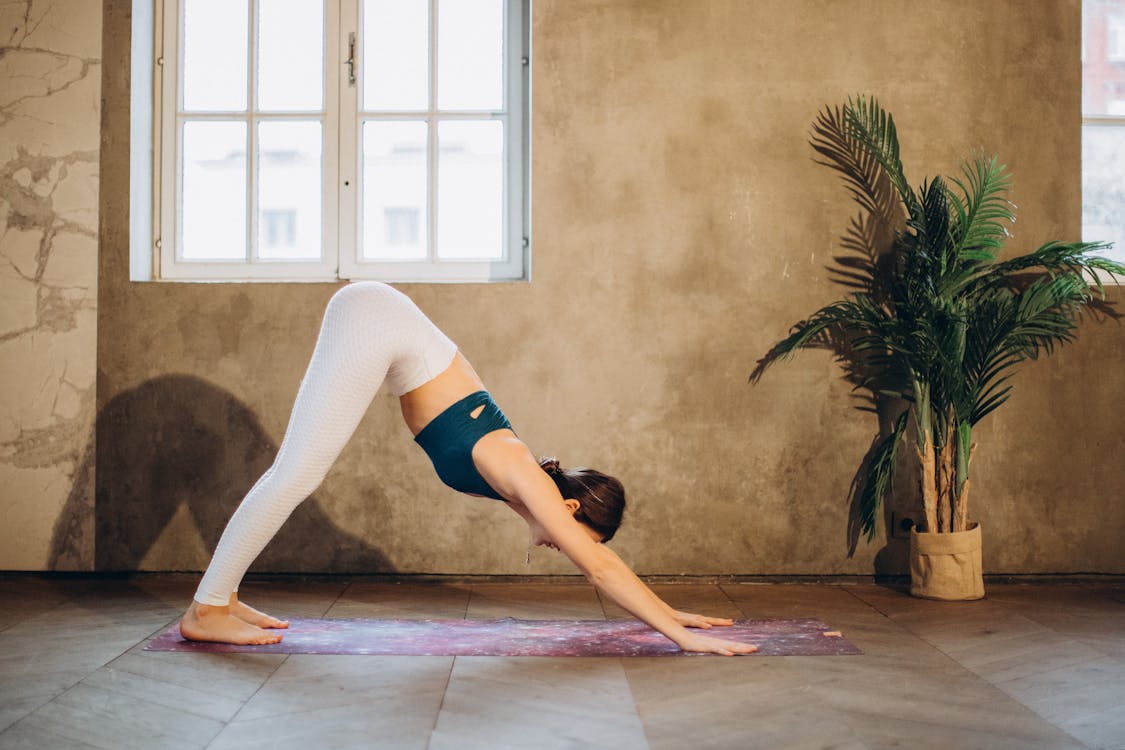Mastering Downward Facing Dog: A Complete Guide to the Yoga Pose
Downward Facing Dog, or Adho Mukha Svanasana, is a foundational yoga pose revered for its transformative benefits on both body and mind. Join us as we delve into the mechanics, benefits, and precautions of this iconic yoga posture, empowering you to reap its rewards safely and effectively.

How to Do Downward Facing Dog:
Start on your hands and knees in a tabletop position, with your wrists aligned under your shoulders and knees under your hips.
Press firmly into your palms and toes as you lift your hips toward the ceiling, straightening your arms and legs.
Engage your core muscles and draw your belly button toward your spine to lengthen your spine and maintain a flat back.
Press your heels toward the floor while keeping a slight bend in your knees to prevent strain on the hamstrings.
Relax your head and neck, allowing them to hang naturally between your arms.
Hold the pose for 5-10 breaths, focusing on deep, steady breathing.
To release, exhale as you gently lower your knees to the mat, returning to the starting position.
Benefits of Downward Facing Dog:
Improves flexibility: Downward Dog stretches and lengthens the entire body, particularly the spine, hamstrings, calves, shoulders, and hands.
Builds strength: This pose strengthens the arms, shoulders, legs, and core muscles, helping to improve overall stability and balance.
Relieves tension: Downward Dog promotes relaxation and releases tension in the neck, shoulders, and back, making it an excellent antidote to stress and fatigue.
Enhances circulation: By inverting the body, Downward Dog encourages blood flow to the brain, heart, and upper body, stimulating circulation and boosting energy levels.
Calms the mind: Practicing Downward Dog promotes a sense of calm and clarity, reducing anxiety and promoting mental well-being.
Precautions and Modifications:
Avoid if pregnant: Pregnant women should avoid practicing Downward Dog in the later stages of pregnancy or modify the pose by placing their hands on a block or chair for support.
Modify for wrist pain: If you experience discomfort in your wrists, try practicing Downward Dog on your forearms (Dolphin Pose) or using yoga blocks under your hands to reduce wrist strain.
Bend your knees: If you have tight hamstrings or lower back pain, keep a generous bend in your knees to prevent overstretching and strain.
Listen to your body: Honor your body's limitations and avoid forcing yourself into the pose. If you feel any pain or discomfort, ease out of the pose and consult with a qualified yoga instructor for guidance.
Downward Facing Dog is a versatile yoga pose that offers a multitude of physical, mental, and emotional benefits. By incorporating this pose into your regular yoga practice, you can improve flexibility, strength, and relaxation while fostering a deeper connection between mind and body. Remember to practice mindfully, honor your body's needs, and enjoy the journey of self-discovery and transformation that Downward Dog has to offer.

 Cricket Score Counter
Cricket Score Counter Heads or Tails
Heads or Tails
You have not logged in, please Login to comment.